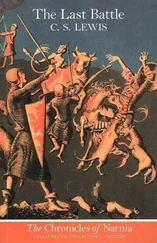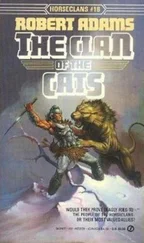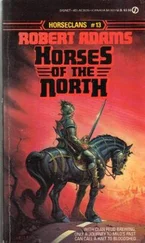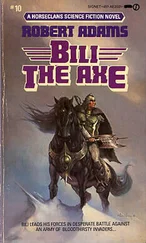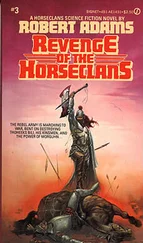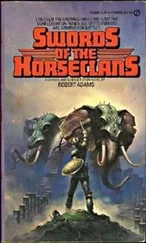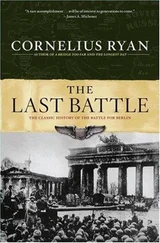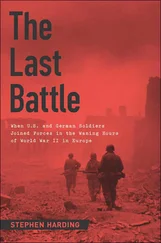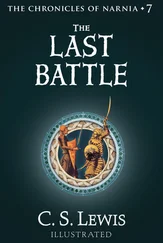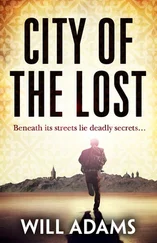Aware of the Director’s long-held interest in unusual animals, Corbett had reported these creatures to the Center on his daily report and had suggested the dispatch of a trained man to properly examine them. Dr. Mike Schiepficker had been coptered up far enough for a mounted escort of troopers to meet him.
Actually, Corbett reflected, a large armed escort had really been unnecessary, this time around, and he could not conceive of any explanation for it, not one that made any sense. Nor could Johnny Kilgore, who had ranged farther afield and seen more.
Where, just bare months in the past, there had been a country aswarm with large and small mounted war or raiding parties of savage Ganiks, they had seen none, not one single living Ganik, and the one dead one they had chanced across had been many days’ trek southward of here, that one killed by a bear. Their woodland camps sat tenantless—some of them, according to Johnny, had been attacked and/or burned, the signs were there—and even the plateau which had recently been home to thousands of the cannibal raiders was now utterly deserted, now affording a habitat only to a herd of scrubby ponies and other wild creatures.
And, again according to old Johnny, not only had all of the bunches of outlaw Ganiks disappeared from their usual haunts, but all of the families of Ganik farmers were gone as well, their farms and farm buildings sitting empty and obviously unworked for many months.
So the machine guns and mortars reposed still in their crates and cases in the rear of the supply tent, and the only shots anyone had fired hereabouts had been at game or to dispatch specimens of these huge, wormlike beasts in and about the work site.
When the last portions of the creature that Schiepficker intended to save had been immersed in the preservative and the containers sealed, the zoologist washed and dried his hands, then nodded to Corbett.
“Thanks again for your help, Jay. Now I guess we’d best get on the horn and tell Sternheimer of my findings and suppositions.”
But even as the two men left the tent, a trooper trotted up, red-faced and streaming sweat in the heat. He rendered the abbreviated hand-salute of a cavalryman, then panted, “General Corbett, sir, Major Gumpner says come at once. Old Johnny Skinhead is back again. He’s brought him a prisoner, another Ganik what says Dr. Arenstein is still alive, or was a month ago when he left her, leastways.”
The valley was narrower at the foot of the ridge than it became farther northward; therefore, the descending columns of New Kuhmbuhluhn horsemen found it necessary to ride on some hundred yards before there was room to extend to full battle front. Both the advance and the extension were accomplished at a slow walk, partly to spare the horses and partly to minimize confusion, the fiercely independent and often unruly noblemen of New Kuhmbuhluhnburk never having been fond of or amenable to unit discipline or drills.
Following a recently conceived plan, Prince Mahrtuhn Gilbuht led his Second Battle toward the enemy’s left, his ranks of horsemen spanning the distance from the eastern bank of the stream, across the road and to the foot of the flanking knoll. King Mahrtuhn led his own First Battle up the center, his ranks extending from the western bank of the stream to about halfway to the western knoll. Prince Byruhn’s smaller Third Battle could only cover the remaining distance by reducing the depth of the formation. Once formed to royal satisfaction, King Mahrtuhn’s massed trumpeters winded the call and the three battles began their advance.
For their part, the Skohshun formation remained just as they had been when first the Kuhmbuhluhners had crested the ridge for all the time it took the cavalry to descend, form up and start forward. Then, drums rolled, and the first two ranks of pikemen knelt and angled their long weapons so as to present an unbroken succession of foot-long, polished-steel pikeheads—half of them about brisket-high, half of them about head-high, where the horses could easily see them. Most of the ranks behind lifted their pikes to shoulder level, holding them with the points at a slight angle downward from the horizontal, ready to stab or thrust. The rearmost ranks of pikemen simply stood in place, their weapons still grounded, ready to fill the positions of fallen comrades in the ranks ahead.
Arrayed on the far right of the Third Battle, the right flank of Bili’s condotta was some twenty yards distant from the left flank of King Mahrtuhn’s First Battle, and the young thoheeks could have wished it were twice that distance or even more. The worst thing that could happen to him and his people, even worse than not being supported in meaningful force at the proper time, would be to have a covey of hotheaded noble arseholes charge along the same stretch of front that Bili was attacking just as he had commenced his attack; but he could do nothing more, now, than to maintain as much distance as possible from the First Battle and pray Sacred Sun that such did not occur.
Observing the disciplined precision of movements, the calm, professional impassivity of the pikemen up ahead, then recalling the ill-controlled, moblike aspects of the royal battles with whom he now rode, Bili could not conceive of any possibility of King Mahrtuhn’s winning the battle looming close, and he mindspoke his principal lieutenants.
“Remember my words of last night, all of you! Barring the most impossible variety of miracle, the New Kuhmbuhluhners haven’t the chance of a wet snowball in a red-hot skillet, not against foot of that caliber yonder. Do that which we planned, but no more unless we are substantially reinforced ... and I greatly doubt that we will be.”
He broke off the farspeak, then, and mindspoke his huge black stallion, Mahvros. “It will be up to you, my brother, to see to it that all of the herd comes to me and my fighters immediately I mindcall you. Will Mahvros do that, for his brother?”
The big warhorse beamed assurance and undying love, even as he and every other horse in the three battles commenced a jarring gallop in response to the summons of King Mahrtuhn’s trumpeters.
With a deafening cacophony of screaming horses, shouting, roaring, shrieking men and clashing metal, the First and Second Battles and two-thirds of the Third crashed against the pike line. Many horsemen were thrown as their mounts refused to impale themselves on the flashing points ahead. Others fended off seeking points with shields while hacking savagely at the tough oaken or ash hafts with sword or axe, or made to transfix the pikemen with lances that were mostly so much shorter than the pikehafts as to be worse than useless.
Standing in his stirrups, Prince Mahrtuhn Gilbuht swung his heavy axe with both big hands at a probing pike even as another point was jammed with force through the eyehole of the stallion’s chamfron. With a shrill scream of mortal agony, the massive destrier reared, his steel-shod forehooves flailing empty air, while his rider fought to maintain his seat. Then another pikepoint was jammed its full length into the unprotected belly of the horse and the beast tried to back off the hellish steel, lost his balance and came crashing down, pinning his royal rider beneath his ton and more of weight.
On the left, Prince Byruhn had learned well his hard lessons on how to deal with a pikeline, nor had he carried out to the full his royal sire’s orders. He led his nobles in riding up and down the glittering hedge of steel, just beyond their easy reach, swerving closer in no set pattern to hack at the hafts, while his mountaineer axe throwers picked off pikemen, here and there, with accurate casts of their deadly hatchetlike missiles.
Bili’s condotta began the charge in company with all the rest of the New Kuhmbuhluhn horsemen, but ten yards out from the closest pikepoints, the condotta came to a practiced halt. They dismounted, unslung bucklers from off their backs, drew their swords and sabers and advanced at a trot in three-quarter armor with closed helms. When they were almost within touching distance of the bristling array of pikepoints, each third or fourth warrior allowed blade to dangle on knot and withdrew from behind the buckler what looked at a distance to be a head-sized ball of brown cordage.
Читать дальше

